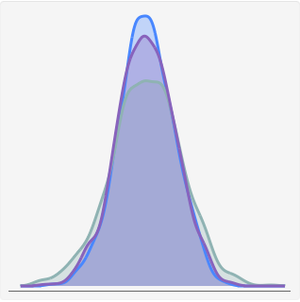Modeling Bathtub Failure Rates with Hjorth Distribution
Hjorth distribution is used to model lifetimes in reliability studies. For some choice of parameters, its hazard function has a bathtub shape, which corresponds to higher failure probability during a burn-in period, which then lowers and again raises with continuous use. Usually a piece of electronic equipment has an initially high failure rate due to the randomness in quality variations during its production.
Consider a device with its lifetime modeled by Hjorth's distribution with bathtub-shaped hazard function.
To avoid early failures, the equipment is operated at stress level during a "burn-in" period. Assuming a bathtub hazard function, find the probability of failure within the first year (warranty period).
Find the length of the burn-in period, after which the failure probability within the first month is reduced by half.
The expected lifetime of the equipment after having survived the burn-in period.
Find the time at which the equipment is most reliable.
In general, the Hjorth distribution is very flexible and with appropriate choice of parameters, it admits many shapes of hazard function, not only bathtub.


























